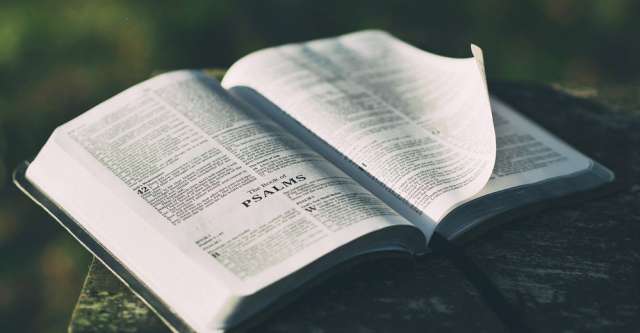From original paper “THE IMPACT OF THE LACK OF BIBLICAL CHRISTIANITY / MORALITY UPON PUBLIC EDUCATION – WEEK FIVE”
I. STATISTICS
With school shootings on the rise and increased violence within the school walls, public schools are no longer a safe environment for children to learn. Many believe the increased violence and immorality is directly attributable to the removal of moral education within public education.
Statistics appear to point to a connection that this break from tradition is directly connected to increased homicide and suicide, unwed pregnancies for young women aged 15 – 19, sexually transmitted diseases, and the number of single – parent households. Ironically the only statistic to decrease during this time was the SAT total score (Barton, 2002; Wynne, 1985).
the famous Scopes trial which helped undermine the “validity of the Declaration of Independence…inalienable rights of life, liberty, and pursuit of happiness; our system of government; our civil rights; sanctity of human life; and whether absolute truth exists as the basis of our legal system”
Additionally, an overwhelming majority of Gallop polls indicated “pupil discipline” (Wynne, 1985, p. 4) as the most frequent criticism against public schools. He also drew a parallel, albeit slight, that early rural America emphasized nuclear families and religious institutions coupled with a strong work ethic; however schools have been replacing these institutions for quite some time.
II. WORLD HISTORY
All throughout history, cultures have purposely taught moral values as an integral part of the educational process. Moral teaching was central and normal to learning in America at one point as it was in ancient cultures from the early Mesopotamian, Egyptian, and Hebraic cultures through the Greek and Roman empires, the Middles Ages, and the Enlightenment period (Wynne, 1985; Noel, 1997). The goal was for students to be productive members of society.
III. U.S. HISTORY
Quakers, Puritans, Catholics, and other denominations fled religious persecution in England and other European nations with many colonies establishing official religions (Marzilli, 2004; McDurmon, 2014). Examples include the Massachusetts Bay Colony passing a law in 1642 “requiring parents to teach their children to read” (Rakes, C. 2006, p. 176) and the Old Deluder Act of 1647 which “…explained not only why students needed an education but how it was to be accomplished” (Barton, 2002, p. 80). Children were to be taught to read the Bible in school to prevent ignorance against Satan and the abuse of power.
The New England Primer, the first textbook used in the colonies, published in 1690, contained an authorized catechism as well as sections using Bible verses to learn the alphabet, hymns, prayers, and a letter from John Rogers to his children prior to martyrdom (Rakes, C., 2006). Considered the Schoolmaster of the nation, Noah Webster, created the Blue Back Speller, which taught Americans to read, learn morality, and patriotism. He desired all students “acquire good principles…for this reason society requires that the education of youth should be watched with the most scrupulous attention” (LaHaye, 2003, p. 76).
…many of these same children learned to read at home and Sunday school. Remarkably the literacy rate in America at this time was 78 percent (Rakes, C., 2006)
Many people today would be surprised to learn that our oldest universities, such as Harvard and Yale, were initially seminaries. Harvard was named after a famous preacher, John Harvard, and ten of its first twelve presidents were preachers. These once bastions of theological truth now revile the very thing upon which their founders stood – faith and belief in Jesus Christ (Gibbs, 2003).
Admission to these schools generally required students to “…be fluent in reading and writing Biblical languages…were expected to know Latin, the language of most theological writings at the time. When…teenagers as young as fourteen were admitted to Harvard, it speaks volumes about the quality of education that…young children received” (Gibbs, 2003, p. 150).
In the nineteenth century, there were still few schools and “almost one–half of the children in the United States did not attend school” (Rakes, C. 2006, p. 374). However, many of these same children learned to read at home and Sunday school.
Remarkably the literacy rate in America at this time was 78 percent (Rakes, C., 2006). However, there was great debate concerning the responsibility of public schools as leaders within the Progressive Movement felt public schools should deal with problems such as “hygiene, illiteracy, poverty, and vice” (Roberts, R., 2002, p. 10).
Since then, the educational system in the United States has “substantially disassociated itself” (Wynne, 1985, p. 4) from teaching moral values to students while increasing the complexity of academia, many times to the detriment of students.
Current policies have placed an extremely low priority for teaching morality (Noel, 1997).
IV. CAUSES
A. Several major events in U.S. history eroded the teaching of morality in school.
The Scopes trial of 1925 “polarized the debate on evolution as to effectively eliminate the middle ground and became a significant force…recasting the fundamentalist image” (Harper, 2006, p. 11). Starting shortly after the Civil War in which “Enlightenment epistemology had created a shift in people’s understanding…Religion was coming to be seen as…establishing and supporting personal moral views only, and not as a true ‘worldview’ that had a voice in every area of investigation” (Harper, 2006, p. 8) in life, work, politics, and academia including the sciences.
This growing mindset led to the famous Scopes trial which helped undermine the “validity of the Declaration of Independence…inalienable rights of life, liberty, and pursuit of happiness; our system of government; our civil rights; sanctity of human life; and whether absolute truth exists as the basis of our legal system” (Coryell & Pirtle, 2005, p. 1).
B. A major shift in religion and its influence in society can be attributed to judicial activism in which the courts have created, rewritten, and misinterpreted laws.
The most blatant being when the U. S. Supreme Court ruled, “The First Amendment has erected a wall between church and state. That wall must be kept high and impregnable. We could not approve the slightest breach.” This decision was based on the phrase “separation of church and state;” a phrase not used or applied in the nation’s first 150 years, but gained notoriety and broad application at all levels of government to the point of ruling previous “religious activities and expressions as unconstitutional” (Barton, 2002, p. 13; Gutierrez, 2005). This phrase is found only in a personal letter from Thomas Jefferson to the Danbury Baptist Association (Gibbs, 2006), but in context indicated the government was not to be involved in men’s religious affairs.
The Supreme Court failed to note that Thomas Jefferson “facilitated church services inside the US Capital”
Jefferson wrote numerous treatises indicating the “Constitution…has not placed our religious rights under the power of any public functionary”, that the government is “[prohibited] by the Constitution from intermeddling with religious institutions…or exercises”, and no “power over the freedom of religion…[is] delegated to the United States by the Constitution” (Barton, 2002, p. 44).
Even more egregious is the Supreme Court ignored over one hundred years of its own rulings, such as Davis v. Beason (1889) and United States v. Macintosh (1931) supporting religious exercise throughout all of society because America was a Christian nation (Barton, 2002).
The Supreme Court failed to note that Thomas Jefferson “facilitated church services inside the US Capital”, recommended a “Bible image for the Great Seal of America”, and placed the word “God directly into the state seal” of Virginia (Barton, 2016, p. XIV). Also discounted were George Washington’s handwritten prayer journal, Daily Sacrifice, and eyewitness accounts of divine intervention concerning George Washington being bulletproof during the French-Indian War and American Revolution (Marshall & Manuel, 1977).
Also forgotten or ignored was Congress purchasing 20,000 Bibles for it citizens, its numerous approvals for days of fasting, and its writing of religious articles for the military (Barton, 2002; Library of Congress, n.d.). Additionally, the Supreme Court overlooked Benjamin Franklin’s impassioned speech calling for prayer as the Constitutional Congress was on the verge of disbanding without a constitution, the mention of God in the Declaration of Independence giving men their inalienable rights, and Patrick Henry’s speech in the Virginia House of Burgess imploring God’s intervention for liberty (Marshall & Manuel, 1977), and the many buildings in Washington adorned with biblical and scriptural markers.
C. As prayer was taken out of the public school system by the U.S. Supreme Court (Engel v. Vitale, 1962), a moral abyss developed in public schools.
Unfettered by morality, secular humanism became the doctrine of the public school system for children of all ages; an absolute standard of right and wrong no longer existed. Humanism denies God’s existence and initially places man in God’s place, “invariably ending up equating humans with animals…denies the value of life…leads political leaders to think that troublesome people are expendable…leads to human suffering” (Roberts, 2002, p. 34).
One only need study America’s historical documents, such as the Mayflower Compact, the First Continental Congress’ first official act in 1774, the 1787 Article III Ordinance, or even George Washington’s first general order to his troops as its Commander–in –Chief to understand early “political and military leaders were people of prayer” (Nilson, 2004, p. 3–9) and how fallacious current court and legal rulings have become.
D. “Common law is now dead in America” (Gibbs, 2006, p. 152).
The common or case laws based upon the Bible since the founding of the United States which had provided a moral and absolute standard have been superseded by statutory law. This means historical case precedents / decisions issued by the courts from previous years (Essex, 2016) no longer mattered. In essence, laws made the legislative branch or a derivative of the government (EPA, FDA, DOE, etc.) at any level are not based on earlier historical judgments or precedents but upon majority rule at any given time on any given issue.
Humanism denies God’s existence and initially places man in God’s place
Instead of making decisions on what is right, phrases such as “meeting societal needs and determining good public policy” are guises for employing personal opinions and preferences. Absolute standards no longer exist as the rulings by America’s Founding Fathers who based their decisions on biblical truth have been overturned, ignored, and reviled by those unfamiliar with the Bible and its moral foundation (Gibbs, 2006).
E. The Industrial Revolution, lasting from about 1760 – 1900 (although some place its start in the early 1800s),
…brought unexpected benefits such as greater wealth and luxury, improved agricultural techniques, increased production of textiles, expanded use of steel, better transportation and communication, health and medicine advances, and inventions through science research (Thompson & Combee, 1997).
However, these benefits took a significant toll on the family unit as men moved away to work in factories, thus decreasing the father / male influence and the teaching of morality in the home and society. Duties once restricted to men such as training the children were thrust upon women / mothers. The female role model gradually began to fill this vacuum and became the moral leaders of the home and family, school, church, and society.
Additional pressure came from Europe via romantic novels which glorified the new role of women as “they became the champions for justice and morality” (Fugate, 2002, p. 18) rather than a husband and wife working together to teach values to their children.

